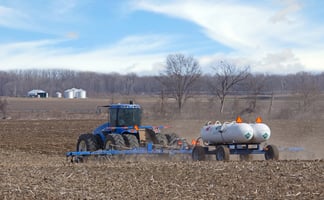Hog Producer Profits Surge in 2025
October is National Pork Month. Originally, the month-long celebration marks the time of year when hogs are traditionally marketed. That still holds true, as hog slaughter tends to peak following the summer slump. Ironically, pork prices tend to bottom in October due to larger supplies and lower demand, so pork is celebrated when prices are typically lower.
More importantly, though, this October’s celebration follows a summer of strong demand and pork prices. Producers benefited from aggressive buying from meat packers, translating to higher margins for the industry.
Roaring Margins
According to Iowa State University, producers in Iowa have been very profitable amid the upswing in cash hog prices and steady production costs. Economists calculated that the typical farrow-to-finish operation averaged a profit of nearly $50 per head in September, up from just $7.76 per head in September 2024 and a loss of about $12 two years ago. Margins were the highest since 2021 after the U.S. emerged from the COVID-19 pandemic. In fact, margins have been positive for 18 consecutive months.
Feeder-to-finish hog margins have also been favorable over the past year despite larger volatility. Margins have only dipped negative six months out of the same 18-month period. Iowa hog feeders were very profitable in August and September, largely due to lower feed costs.

Part of that profitability stems from prices that surged over the summer. The CME Lean Hog Index hit a peak of $112 per cwt in late June, the highest since the summer of 2022. The index is still higher year-over-year and well above the five-year average despite declining sharply from its summer highs.
Pork popular in U.S. and abroad
Record beef prices have been a tide that’s lifted all ships, including U.S. pork. Wholesale pork prices have been above year-ago levels for much of the past year due to relatively tight pork inventories. Packers worked hard to get ahead of the curve but have been left with slaughter rates below year-ago levels. The latest Quarterly Hogs and Pigs report suggests domestic hog inventories could get even tighter moving through the fourth quarter of this year and the first quarter of 2026. The accuracy of the quarterly report has been called into question many times, but USDA data has been pointing toward lower production this year, which seems to agree with the Sept. 30 hogs and pigs report.
U.S. consumers are not the only avid pork eaters either. As of July, U.S. pork exports were only 3.6 percent lower than last year’s record pace, according to the latest U.S. Census data. Exports backed off largely due to lower demand from China, but shipments were still the second-best on record. There has been a strong willingness to buy U.S. pork even with higher prices.
U.S. pork has established itself as a staple around the world. Recently, it has been highlighted in a South Korean pizza chain, with Johnsonville pork sausage already becoming a customer favorite.
Conclusion
Like other agricultural segments, production costs remain high. Managing costs have always been critical to protecting margins in a price-taking industry.
Fundamental factors remain in play that could continue to support U.S. hog margins. Expectations of tighter hog inventories and competitive pork prices are set to be a tailwind for the industry. The industry remains focused on effective pork promotion to push demand.
As of this writing, temperatures are becoming more brisk. Cooler nights mean it’s a great time to break out soup recipes, particularly a tortellini soup with pork sausage.
--
PAST PERFORMANCE IS NOT INDICATIVE OF FUTURE RESULTS. FUTURES TRADING INVOLVES SUBSTANTIAL RISK AND IS NOT SUITABLE FOR ALL INVESTORS.
.png?width=2347&height=620&name=outlined%20ag%20marketing%20logo%20black%20(1).png)


.png?height=200&name=Website%20feature%20images%20(4).png)
